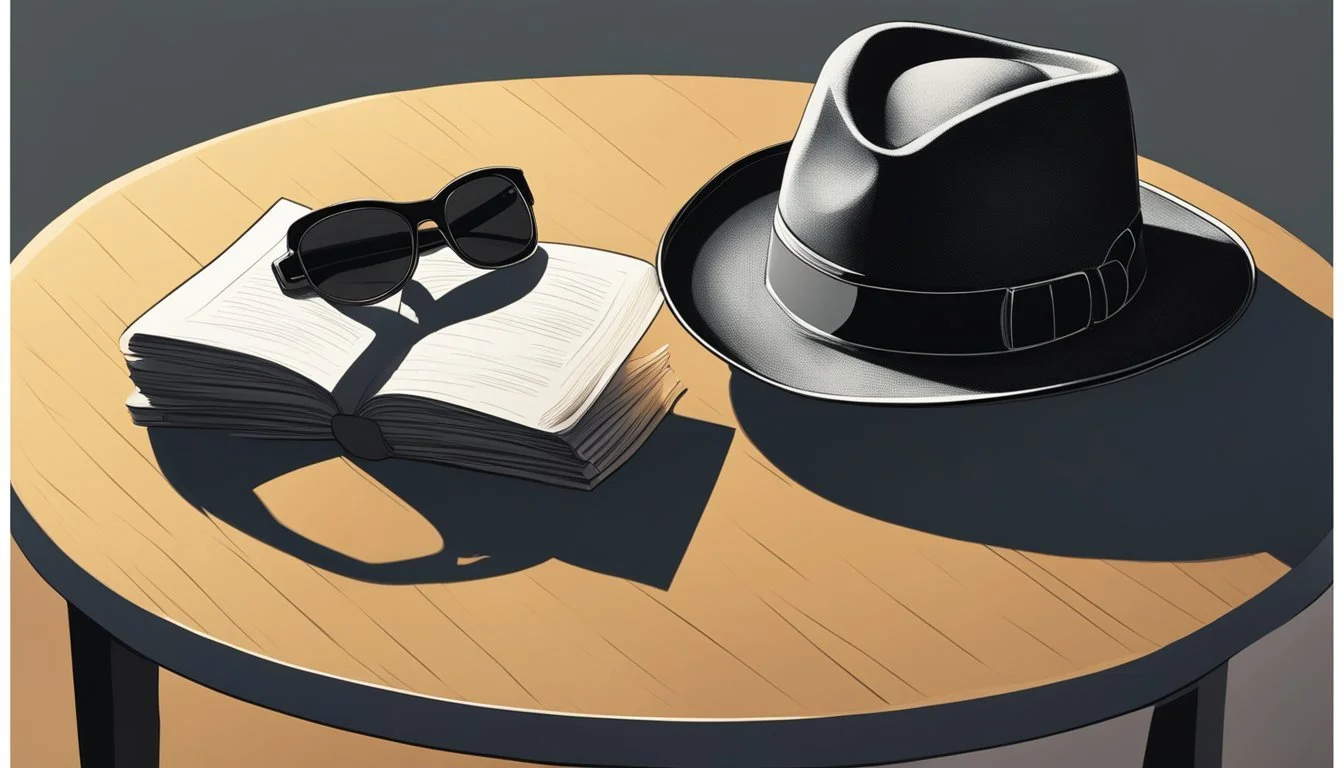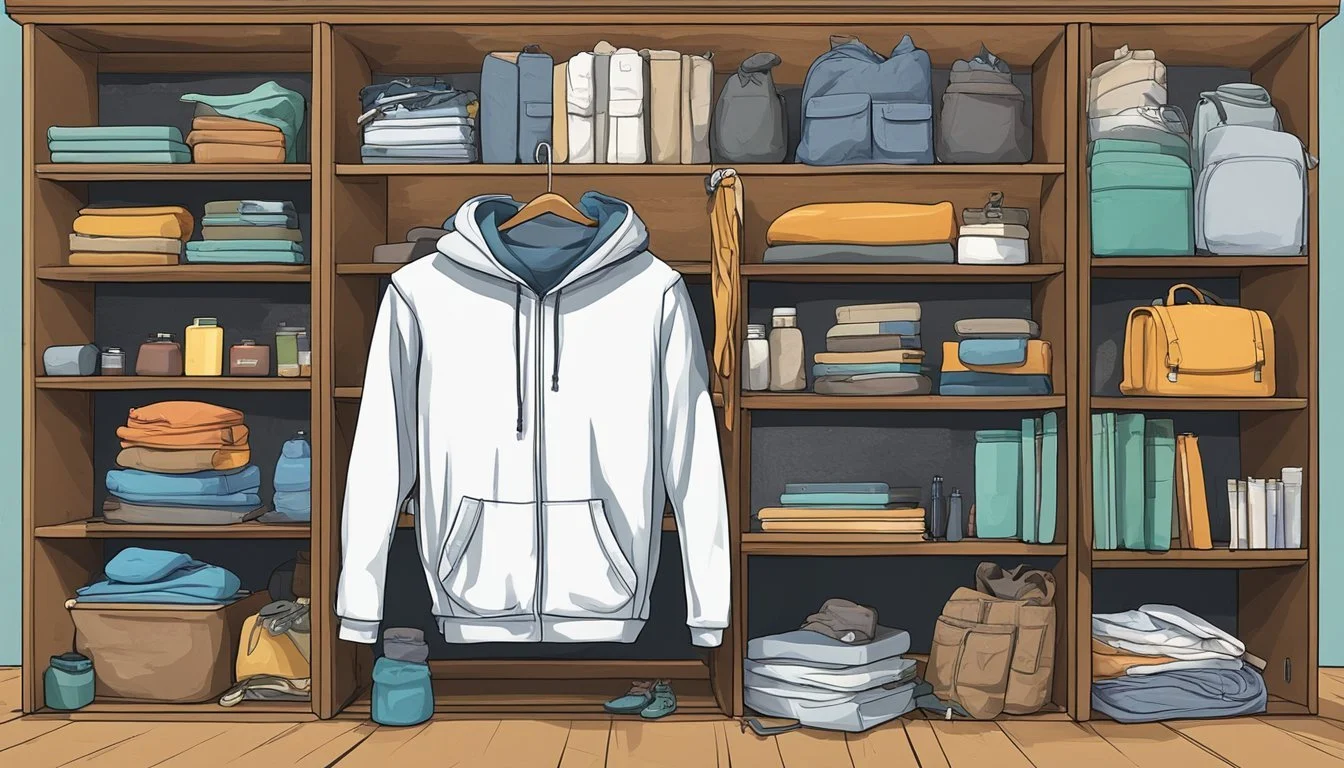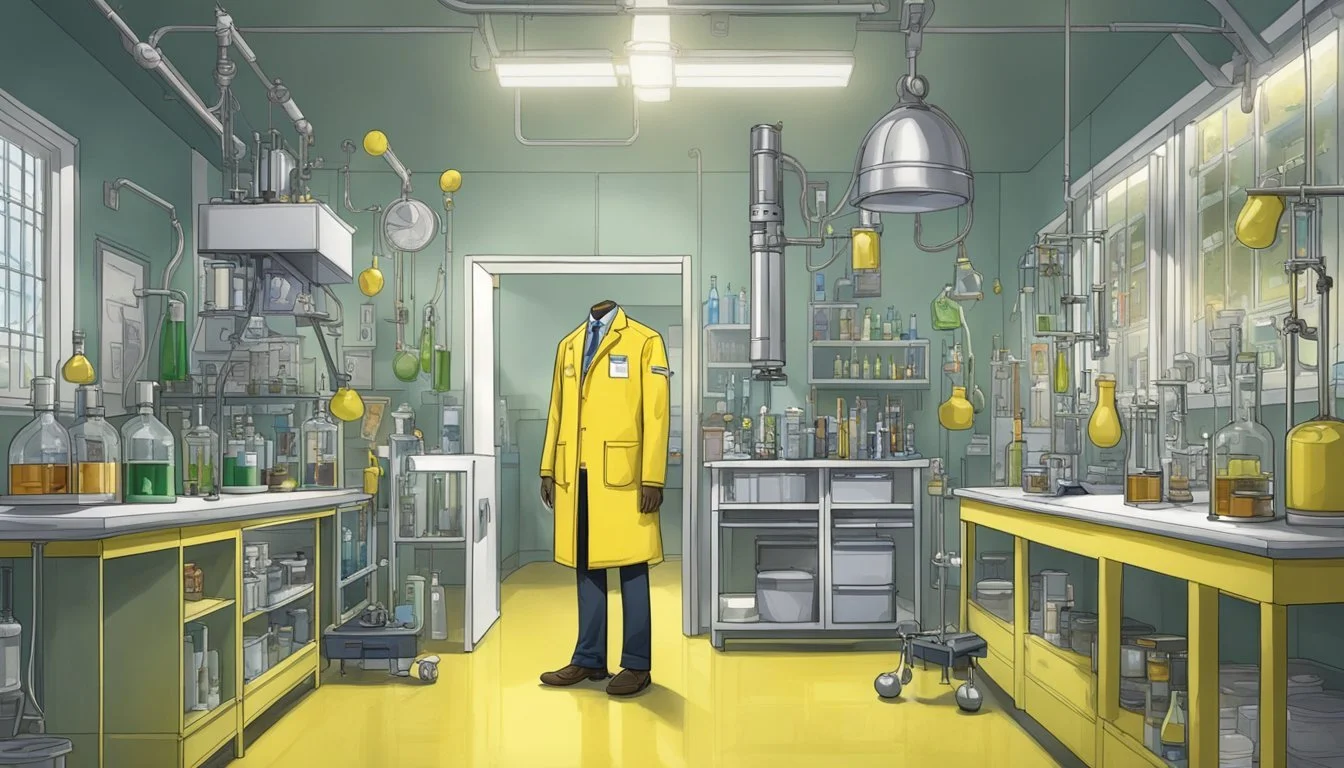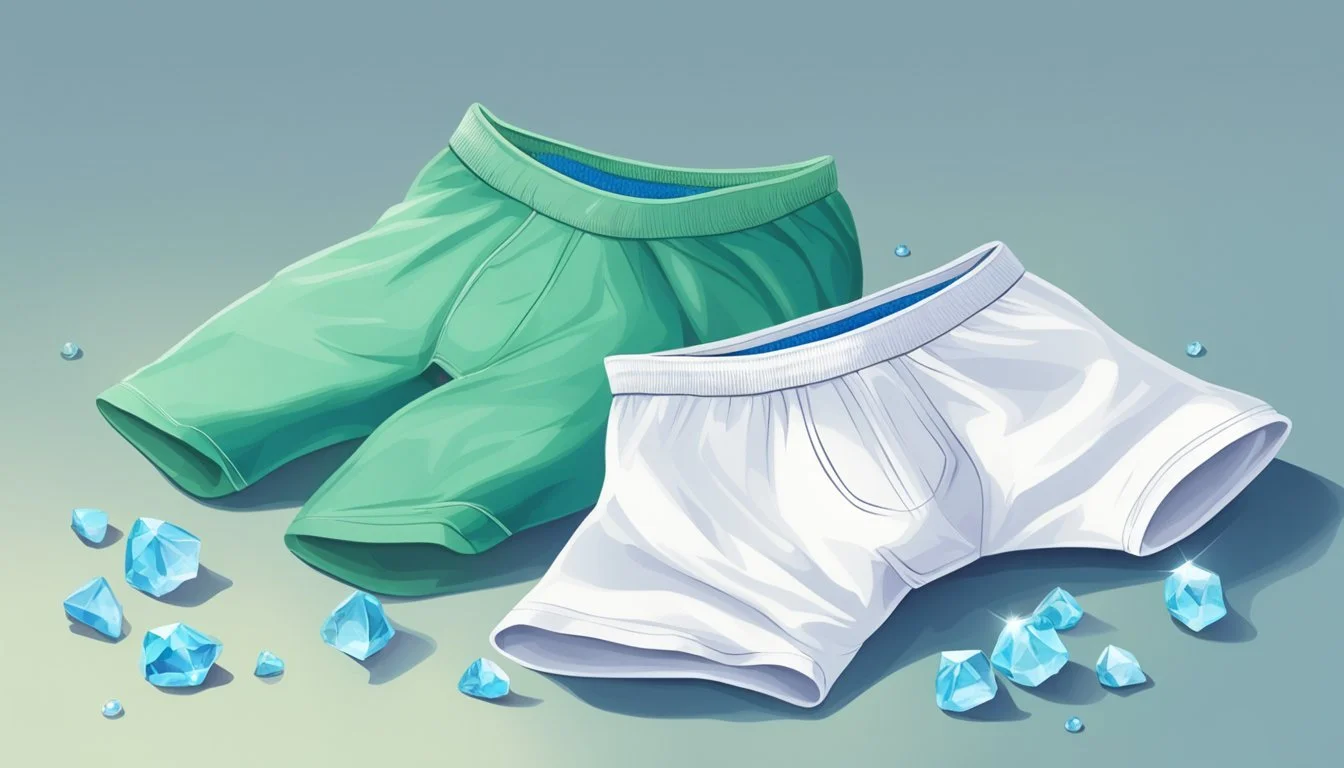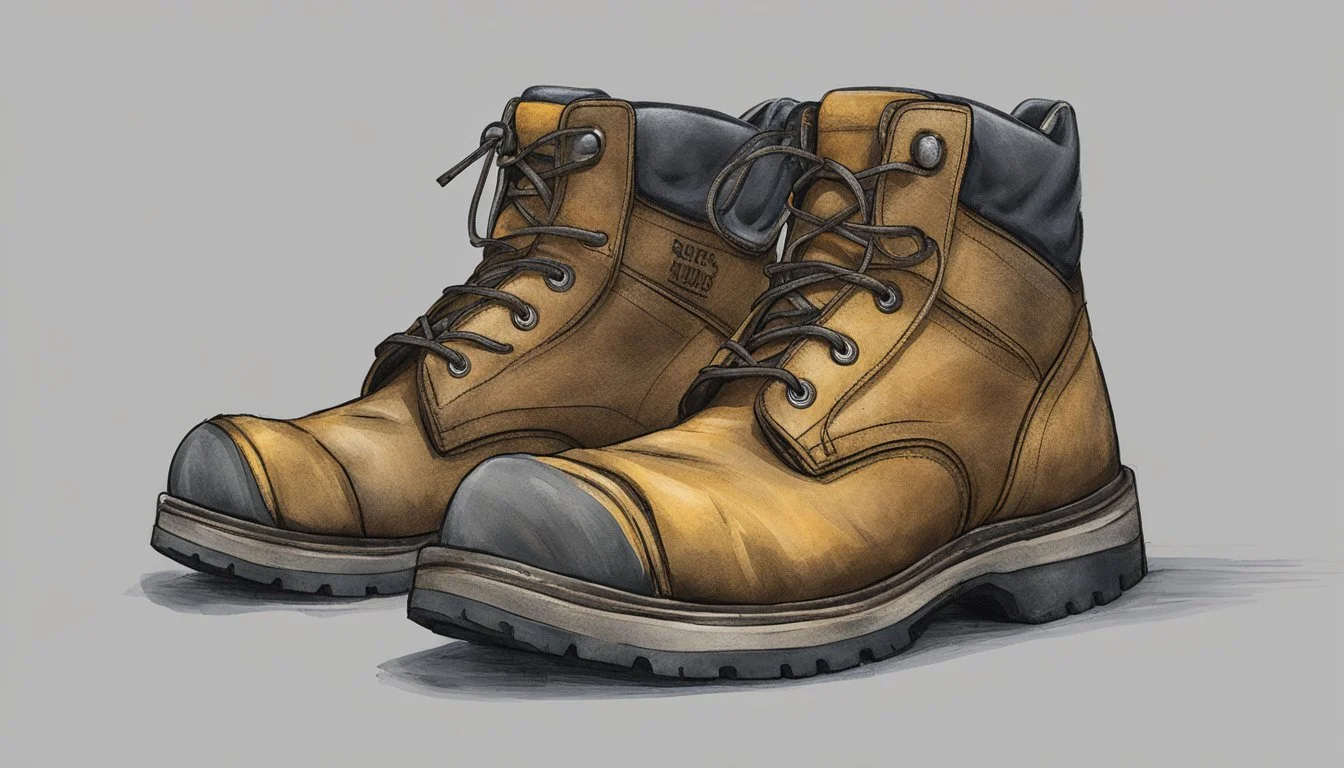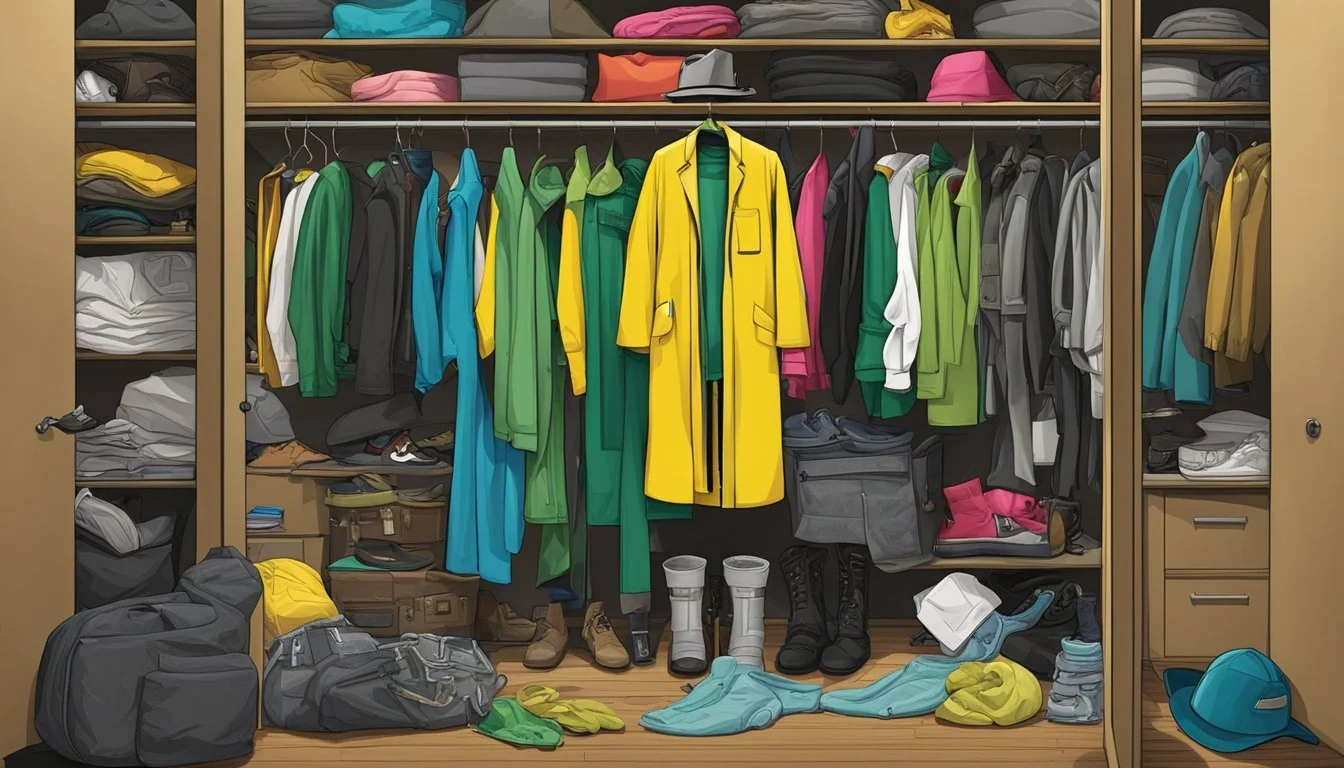9 Breaking Bad Costumes That Defined the Characters
Iconic Outfits from the Hit Series
Breaking Bad captivated audiences with its gripping story of a high school chemistry teacher's descent into the criminal underworld. The show's costume design played a crucial role in bringing the characters to life and conveying their evolution throughout the series.
The carefully chosen outfits and color palettes in Breaking Bad served as visual representations of each character's personality, motivations, and journey. From Walter White's transformation from mild-mannered teacher to ruthless drug lord to Jesse Pinkman's style evolution reflecting his personal growth, the costumes became an integral part of the storytelling. This article explores nine iconic Breaking Bad costumes that defined the show's memorable characters and enhanced the viewing experience for fans.
1) Heisenberg's Hat and Sunglasses
Walter White's transformation into Heisenberg was visually defined by his iconic hat and sunglasses. The black pork pie hat became a symbol of his alter ego, representing his shift from mild-mannered teacher to feared drug kingpin.
The hat style, reminiscent of classic noir films, added an air of mystery and danger to Walt's appearance. It quickly became recognizable to fans and a popular costume accessory.
Paired with the hat, Walt's sunglasses completed the Heisenberg look. The Smith Optics Turntable shades he wore provided both style and anonymity, allowing him to conceal his identity and emotions.
These accessories weren't just fashion choices - they were integral to Walt's character development. Donning the hat and glasses signaled his transition into Heisenberg mode, both to viewers and to himself.
The impact of these items extended beyond the show. Replicas became sought-after collectibles and costume pieces. One of the original Heisenberg hats is even displayed at the Smithsonian, cementing its place in pop culture history.
2) Jesse Pinkman's Baggy Hoodie
Jesse Pinkman's baggy hoodie became an iconic part of his character in Breaking Bad. The oversized, zip-up garment perfectly captured his laid-back, streetwise persona.
Throughout the series, Jesse sported various hoodies in different colors and styles. One of his most memorable was a yellow zip-up hoodie that made appearances in multiple episodes.
The baggy fit of Jesse's hoodies reflected the fashion trends of the early 2000s. It also served as a visual representation of his youthful, rebellious attitude.
Jesse often layered his hoodies over other clothing items, creating a distinctive look. This layered style became a signature element of his character's wardrobe.
The hoodie served both practical and symbolic purposes in the show. It provided Jesse with a sense of comfort and familiarity in high-stress situations.
As the series progressed, Jesse's hoodie choices evolved alongside his character development. The changing styles and colors of his hoodies subtly reflected his personal growth and experiences.
3) Gus Fring's Yellow Lab Coat
Gus Fring's iconic yellow lab coat became a defining element of his character in Breaking Bad. This seemingly innocuous piece of clothing represented his dual nature as both a respected businessman and a ruthless drug kingpin.
The bright yellow color of the lab coat stood out against the dark and gritty backdrop of the series. It symbolized Gus's meticulous attention to cleanliness and order in his illicit operations.
When donning the lab coat, Gus transformed into his alter ego as the master of the superlab. It signified his hands-on approach to overseeing the production of high-quality methamphetamine.
The lab coat also served as a visual reminder of Gus's background in chemistry and his scientific approach to the drug trade. It set him apart from other criminals and emphasized his calculated, methodical nature.
Fans seeking to recreate Gus Fring's look for cosplay or Halloween can easily find yellow lab coats online or at costume shops. Pairing it with khaki pants, a light-colored dress shirt, and a tie completes his professional appearance.
4) Hank Schrader's DEA Jacket
Hank Schrader's DEA jacket is an iconic piece of his wardrobe in Breaking Bad. The jacket serves as a visual representation of his role as a Drug Enforcement Administration agent.
Made of durable material, the jacket typically features "DEA" emblazoned on the back in bold yellow letters. This unmistakable identifier reinforces Hank's authority and dedication to his job.
The jacket is often seen when Hank is on official duty, particularly during raids or crime scene investigations. It symbolizes his professional identity and separates him from his more casual, off-duty persona.
Hank's DEA jacket also sets him apart from other characters in the series. It visually reinforces the tension between his law enforcement role and his brother-in-law Walter White's illegal activities.
The jacket's consistent appearance throughout the show underscores Hank's unwavering commitment to his career and moral principles. It becomes a symbol of his relentless pursuit of justice, even as the lines between right and wrong blur for other characters.
5) Saul Goodman's Colorful Suit
Saul Goodman's wardrobe stands out as one of the most memorable aspects of Breaking Bad and Better Call Saul. His flamboyant suits perfectly reflect his larger-than-life personality and unconventional approach to law.
The character's signature look typically features boldly colored suits in shades like bright green, electric blue, or vibrant purple. These eye-catching ensembles are often paired with equally striking dress shirts and patterned ties.
Saul's costume design serves multiple purposes. It visually separates him from the more subdued attire of other characters, emphasizing his role as an outsider in the criminal underworld. The loud suits also reinforce his persona as a flashy, attention-seeking lawyer.
Costume designer Jennifer Bryan incorporated subtle details to enhance Saul's look. His cufflinks, for instance, feature the scales of justice motif, a clever nod to his profession. The mix of colors and patterns in his outfits mirrors the complexity of his character.
Saul's evolving wardrobe throughout both series reflects his character development. As he transforms from Jimmy McGill to Saul Goodman, his suits become progressively more ostentatious, mirroring his embrace of a less ethical but more lucrative legal practice.
6) Walter White's Tighty-Whities
Walter White's tighty-whities became an iconic costume piece in Breaking Bad. These simple white briefs first appeared in the pilot episode when Walter began cooking crystal meth with Jesse Pinkman.
Throughout the series, the underwear served as a visual reminder of Walter's transformation from an unassuming high school chemistry teacher to a ruthless drug lord. The contrast between his vulnerable state in underwear and his increasingly dangerous actions highlighted his character's complexity.
The tighty-whities also became a symbol of Walter's initial naivety and desperation. As the show progressed, viewers saw less of this costume element, reflecting Walter's growing confidence and power in the drug world.
The significance of this costume piece was recognized beyond the show. Propstore, a well-known auction house, offered Walter White's tighty-whities for sale. These size 40 briefs, featuring a white elastic waistband with blue and gold details, were estimated to fetch between $2,500 and $5,000.
Walter's underwear became such a memorable part of Breaking Bad that it was included in artwork depicting his various outfits throughout the series. This simple garment ultimately became a powerful visual metaphor for Walter White's character arc.
7) Skyler White's Blue Shirt
Skyler White's wardrobe choices in Breaking Bad often reflect her emotional state and relationship dynamics. Her blue shirt serves as a significant costume piece, appearing frequently throughout the series.
The blue color of Skyler's shirt symbolizes sadness and depression, particularly evident in the early seasons. As Walter's wife, she grapples with the news of his cancer diagnosis and the subsequent changes in their lives.
Costume designer Kathleen Detoro carefully selected Skyler's clothing to convey her character's journey. The blue shirt becomes a visual cue for viewers, signaling Skyler's inner turmoil and evolving feelings towards her husband's actions.
As the series progresses, Skyler's wardrobe gradually shifts away from the blue shirt. This change mirrors her character development and growing awareness of Walter's illegal activities.
The blue shirt remains a memorable costume element, effectively communicating Skyler's emotional state without the need for explicit dialogue. It demonstrates the power of visual storytelling in Breaking Bad's costume design.
8) Mike Ehrmantraut's Work Boots
Mike Ehrmantraut's work boots are an essential part of his no-nonsense character in Breaking Bad. These black, sturdy footwear reflect his practical and reliable nature as a former cop turned hitman and fixer.
The boots are designed for durability and comfort, suitable for long hours on his feet or quick getaways. They complement his utilitarian style, often paired with jeans and a simple shirt or jacket.
Mike's choice of footwear emphasizes his readiness for any situation, whether it's a covert operation or a confrontation. The boots' rugged appearance aligns with his tough exterior and seasoned experience in the criminal underworld.
Cosplayers aiming to recreate Mike's look should opt for plain, black work boots without embellishments. This footwear choice captures the character's preference for functionality over fashion, mirroring his straightforward approach to his work and life.
9) Tuco Salamanca's Grillz
Tuco Salamanca's gold-plated dental grill became an iconic accessory that defined his character in Breaking Bad. This flashy piece of jewelry covered his front teeth, serving as a symbol of his wealth and power in the drug trade.
The grill reflected Tuco's ostentatious personality and his desire to flaunt his success. It also emphasized his unpredictable and volatile nature, glinting menacingly when he grinned or shouted at others.
Crafted from precious metals, Tuco's grill was likely custom-made to fit his teeth perfectly. The attention to detail in this costume piece helped bring authenticity to Raymond Cruz's portrayal of the dangerous drug kingpin.
For fans looking to recreate Tuco's look, a replica grill is an essential component. When combined with his signature loud shirts and aggressive demeanor, the grill completes the transformation into one of Breaking Bad's most memorable antagonists.
The grill's prominence in Tuco's appearance made it a lasting visual element associated with his character. It remains a recognizable symbol of his brief but impactful presence in the show's early seasons.
The Role of Costumes in Character Development
Costumes in Breaking Bad serve as visual cues that reveal characters' personalities, motivations, and transformations. They blend symbolism and authenticity to enhance the storytelling and deepen viewers' understanding of each character's journey.
Why Costumes Matter
Costumes in Breaking Bad go beyond mere clothing choices. They act as a nonverbal language, communicating essential information about characters without dialogue. Walter White's transformation from a meek chemistry teacher to the feared Heisenberg is visually represented through his wardrobe evolution.
His initial beige and olive tones reflect his bland, unremarkable life. As he embraces his criminal alter ego, darker colors and more imposing silhouettes emerge. This visual shift mirrors his internal changes, making his character arc more impactful for viewers.
Jesse Pinkman's costume journey also reflects his character growth. His baggy clothes and loud prints in early seasons represent his immaturity and street persona. As he faces challenges and matures, his style becomes more subdued and fitted, indicating increased self-awareness and responsibility.
Symbolism in Costume Design
Breaking Bad's costume designers use color symbolism extensively to reinforce character traits and themes. Green, associated with money and greed, appears frequently in Walter's outfits as he becomes more consumed by his criminal enterprise.
Skyler's cool blue tones signify her initial innocence and later, her emotional distance. Marie's persistent purple wardrobe reflects her struggle with reality and need for control. Hank's earth tones represent his grounded nature and connection to law enforcement.
Accessories also carry symbolic weight. Heisenberg's iconic black hat serves as a visual shorthand for Walter's transformation into a dangerous criminal mastermind. It becomes a powerful symbol of his alter ego, instantly recognizable and laden with meaning for both characters and viewers.
Impact of Costume Design on Audience Perception
Costume design in Breaking Bad plays a crucial role in shaping how viewers perceive and connect with the characters. The strategic choices in clothing styles, colors, and evolution throughout the series significantly influence audience interpretation and emotional engagement.
Shaping Viewer Expectations
Costume design serves as a visual shorthand, instantly communicating key aspects of characters' personalities and roles. Walter White's initial beige and khaki palette reflects his bland, unremarkable life as a high school teacher. This contrasts sharply with his alter ego Heisenberg's black hat and dark clothing, signaling his transformation into a dangerous drug lord.
Jesse Pinkman's baggy clothes and loud prints early on convey his immaturity and street background. As he matures, his wardrobe becomes more subdued and fitted, mirroring his character growth.
Skyler White's evolving wardrobe from casual mom to polished businesswoman visually represents her increasing involvement in Walt's criminal activities.
Evolving Costume Styles Over Seasons
Characters' costume changes throughout Breaking Bad's run reflect their personal journeys and shifting allegiances. Walt's gradual shift from light to dark colors parallels his moral decline and growing confidence in the criminal world.
Jesse's style evolution from sloppy to more put-together coincides with his attempts to clean up his life and take on more responsibility. This visual transformation helps viewers track his personal growth.
Saul Goodman's flashy suits and gaudy accessories remain consistent, reinforcing his sleazy lawyer persona and providing a visual anchor amidst the changing dynamics of other characters.
Marie's persistent purple palette serves as a visual motif, representing her unwavering personality and obsessive tendencies throughout the series.


